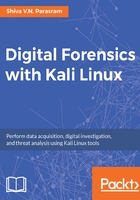
Encryption
Adding to this scenario is the availability of more user-friendly tools to aid in the masking of Publicly Identifiable Information (PII), or any information that would aid in the discovery of unveiling suspects involved in cyber-crimes during forensic investigations. Tools used for encryption of data and anonymity, such as masking of IP addresses, are readily and easily available to anyone, most of which were and are increasingly more and more user-friendly.
It should also be noted that many Wi-Fi hotspots themselves can be quite dangerous, as these can be easily set up to intercept personal data, such as login and password information together with PII (such as social security numbers, date of birth info, and phone numbers) from any user that may connect to the Wi-Fi and enter such information.
The process of encryption provides confidentiality between communication parties and uses technology in very much the same way we use locks and keys to safeguard our personal and private belongings. For a lock to open, there must be a specific matching key. So too, in the digital world, data is encrypted or locked using an encryption algorithm and must use either the same key to decrypt or unlock the data. There also exists another scenario where one key may be used to encrypt or lock the data and another used to decrypt the data. Two such very popular encryption tools are TrueCrypt and VeraCrypt.
These two encryption tools use very high encryption methods that keep data very confidential. The main barrier to forensics may be acquiring the decryption key to decrypt or unlock access to the data.
TrueCrypt and VeraCrypt not only encrypt files but also encrypt folders, partitions, and entire drives!